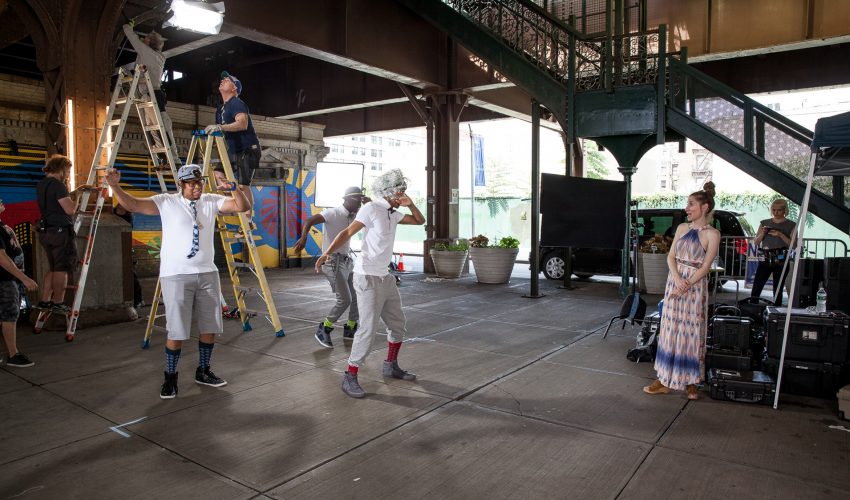145 million views
It’s a milestone any YouTuber would be proud to hit, but for GoNoodle acts like Blazer Fresh, every view represents a child who’s getting active and educated.
As part of GoNoodle’s arsenal of hundreds of movement and mindfulness videos and games, Blazer Fresh songs are designed to activate kids’ bodies and brains. The hip-hop trio (think Kid ‘N’ Play meets Sesame Street) sings about everything from syllables to contractions to how rain works.
And their stuff? It’s catchy — like dangerously, infectiously, you-may-never-get-this-out-of-your-head catchy — and that’s by design.
“Learning is all about getting a concept stuck in your head, so if you can teach kids science or math or reading through movement, why wouldn’t you?” says Chief Content Officer Karen Gruenberg.
Take “Banana Banana Meatball,” a video that’s garnered 3 million views in six months. What steps do you have to take to create such a juggernaut?
1. Start with subject matter.
“We always start by asking ourselves: ‘What are the kids in this age group learning?’” says Gruenberg.
“In early elementary, they’re learning order, repetition and patterns, so we built a song that has word patterns in it, and then we injected a little silliness.”
2. Make the movements simple.
The kids need to be able to do the moves, but also aspire to do them better (otherwise you’ve made a one-and-done video).


3. Keep the lyrics clear.
The words need to be memorable but accessible, so GoNoodle uses as few words as possible and connects them to the movements to keeps kids on the hook.
Speaking of which:
4. You gotta have a hook.
GoNoodle does it the same way Taylor Swift does: by trying to find that magic combination of notes and words you can’t shake off.
“A hook is critical, same as with a pop song,” says Gruenberg. “The kids have to want to hear it or you haven’t hit it out of the park.”


And that leads to a final, crucial piece of the GoNoodle puzzle:
5. Make it repeatable.
Did your mom ever tell you patience is a virtue? Well good; you’re going to need it because the kids are going to want to hear their favorites again … and again … and again.
Teachers and parents hear the songs so often that they have them memorized. But all agree it’s a small price to pay to get kids moving and learning.
Ultimately the videos work for one reason — the kids come first.
“We get into their world, and try to understand them from a development standpoint, but also an emotional and pop culture standpoint,” says Gruenberg.
“The kids know: ‘You made this video for me.’”


